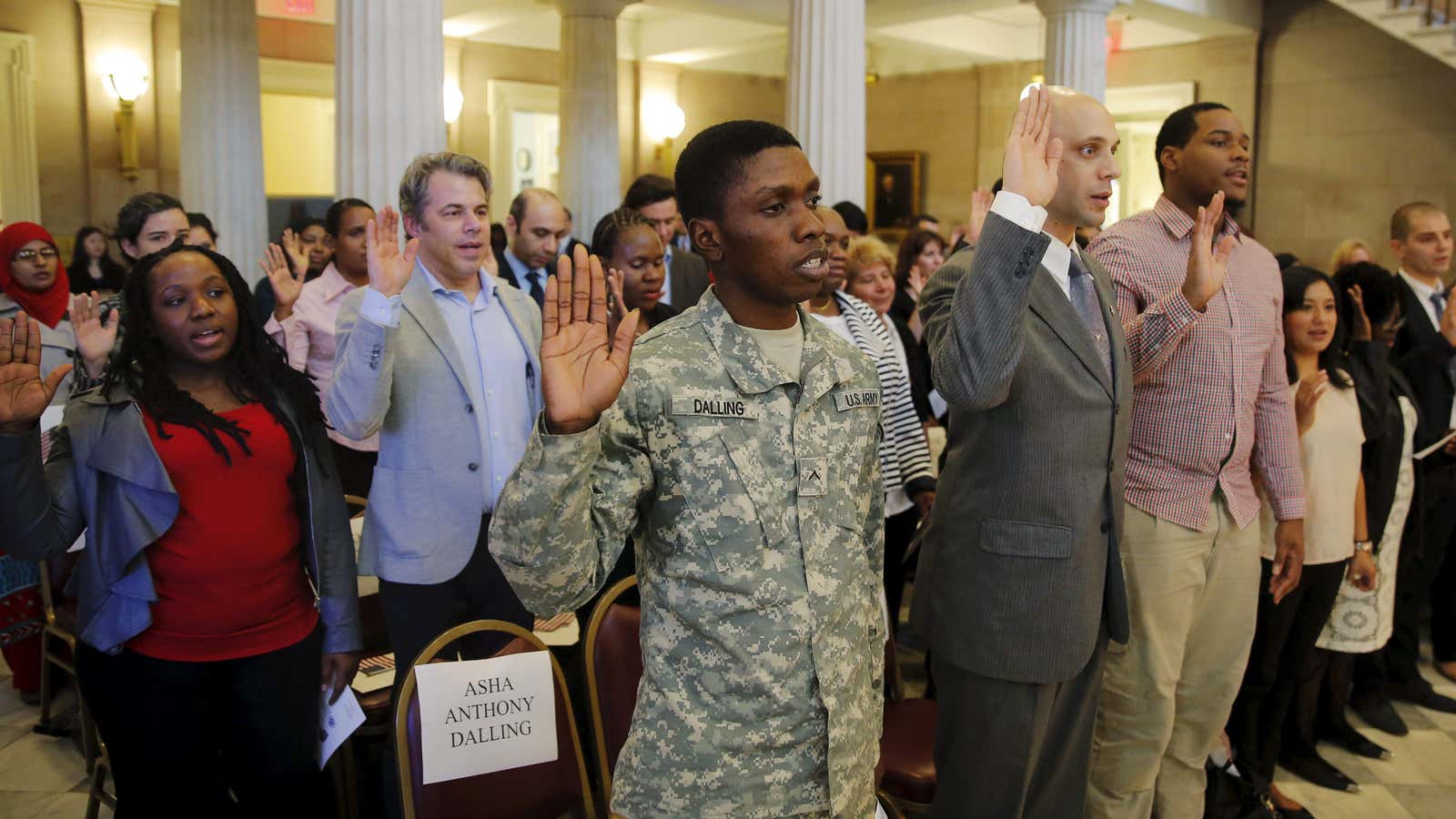When opportunity grows in America, people come to enjoy it—legally or illegally. For the past 15 years or so, that has meant millions from Latin America, especially Mexico, crossing the US border to work as laborers in construction, agriculture, and manufacturing. For the most part, American employers have welcomed them with open arms.
But these days, immigration from Mexico has reversed. For the first time since the 1940s, more immigrants are leaving the US than arriving (thanks to a slowing economy, stricter enforcement of immigration laws, and a desire to reunite with family, says Pew). Today’s new arrivals are mostly higher-skilled engineers, scientists, and others with at least a bachelors degree. They come mostly from Asia, says Jed Kolko, chief economist of jobs site Indeed. By analyzing the Census Bureau’s American Community Survey of 3 million US households (which includes both authorized and unauthorized immigrants), Kolko identified a shift in who is coming to America’s shores, and where they’re living.
Historically, the top 10 occupations with the most immigrants required little education. Immigrants composed 60% or more of the workforce for agricultural inspectors, personal beauty care workers (such as manicurists), and plasterers or stucco masons.
That’s no longer the case. Today, almost half of immigrants to the US hold a bachelors degree, compared with 27% before 2005 (and just 31% of native-born US adults). That shift is evident in the most common professions for new arrivals now: highly-skilled technical fields such as biomedical research and software engineering.
Today’s immigrants are also arriving from different countries than in the past. Some 45% of recent immigrants (ages 25 and up) were born in Asia—particularly India, China, and the Philippines—while just 12% came from Mexico. Their destinations are changing as well. The biggest cities for new immigrants before 2010 were Miami, Los Angeles, and New York. While those are still popular, Seattle, Boston, and Washington DC have cracked the top 10 for the first time in 50 years. The tech hub of San Jose, California, is now the top spot.
Of course, much of this immigration may grind to a halt under US president Donald Trump’s immigration policies. In addition to a Jan. 27 executive order that halted all refugee admissions for 120 days, and temporarily blocked immigrants from seven Muslim-majority countries, leaked executive-order drafts suggest Trump is also preparing to deport about 740,000 so-called Dreamers (unauthorized immigrants who arrived as children), and may end many of the visa options for high-skilled workers and foreign students at American universities.
Frank Bean, a professor of sociology and economics at UC Irvine School of Social Sciences, says restrictions like these could exacerbate a labor shortage in US cities where positions remain unfilled. “Have you noticed the proliferation of ‘Help Wanted’ signs all over the country (at least in the larger more prosperous cities, where most of the job growth is)?” Bean wrote by email. “Clearly there are not enough less-skilled workers around now, especially if employers insist that their workers be legal.”
